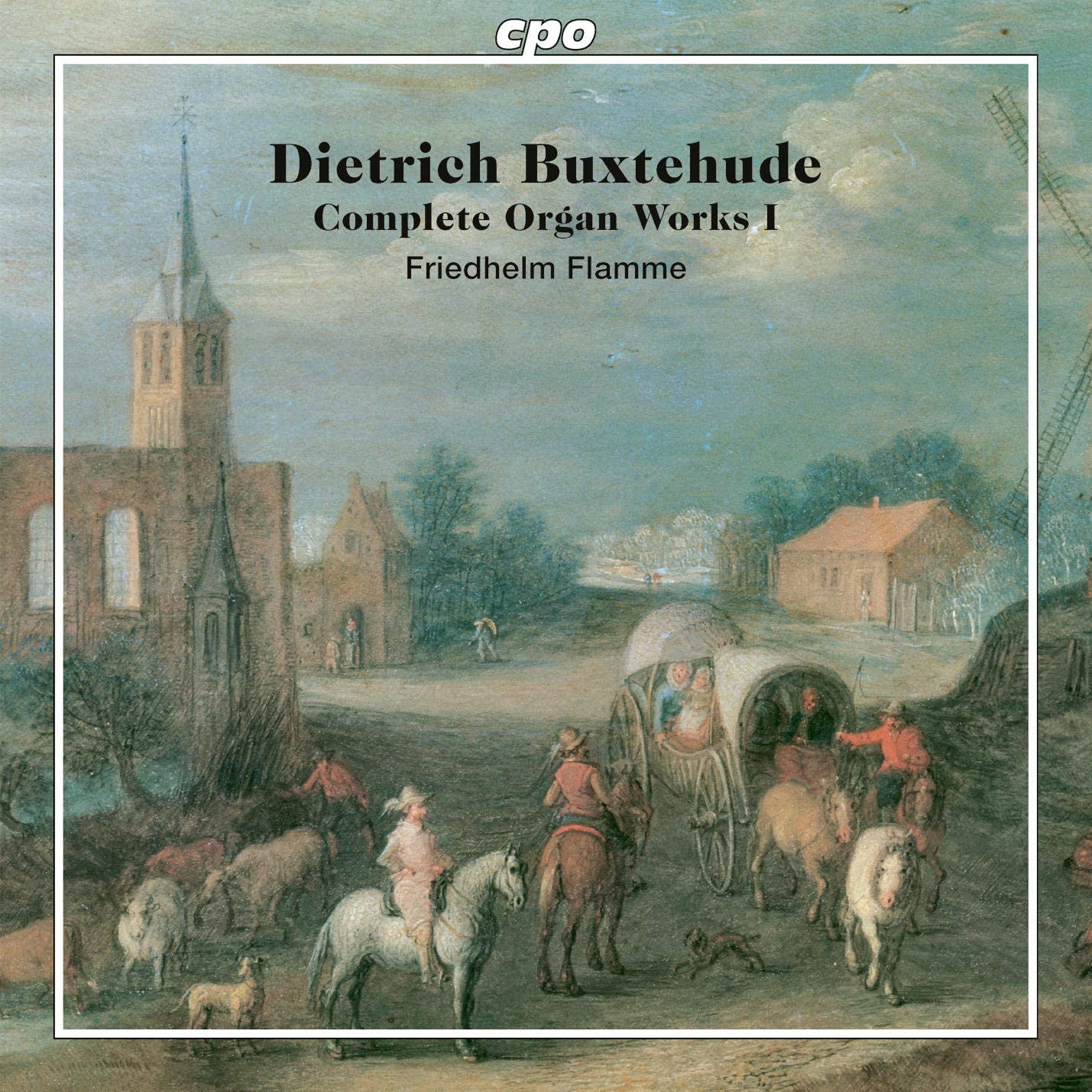Friedhelm Flamme
135:50 (2 CDs in a single jewel case)
cpo 555 253-2
Click HERE to buy this on amazon.co.uk
I was brought up on the renowned Danish organist, Finn Viderø’s recordings of Buxtehude which he made in the 1950s, largely on the 1942 Marcussen organ in the Klosterkirche at Sorø, Denmark. They were notable for their clarity and rhythmic precision, and while he did not use a historic instrument, the Marcussen organ there was an early example of a mechanical action instrument designed on werkprinzip lines and the recordings were energetic and crystal clear – as an elderly and rather mannered schoolmaster once said to me, ‘absolutely spiffing – no smudge!’
Fashions have changed, and organists now search out historic instruments appropriate to the style of the music they wish to record. I find then slightly curious that for the first two CDs in a new complete Buxtehude – and maybe for them all – the accomplished organist, Friedhelm Flamme, should choose the Christoph Treutmann Orgel (1734-7) in the Klosterkirche Grauhof, near Goslar. It is a favourite organ of his and he has recorded both Michael Praetorius and Vincent Lübeck there.
But this instrument postdates Buxtehude, and it definitely not in the North German style. It seems to have been chosen largely because is has – as had the organ in St Mary’s Lübeck since 1685 – a well-tempered tuning, and so makes the playing of some of Buxtehude’s works in more remote keys like E major and F# minor less astringent. It stands in a large Baroque Augustinian abbey built by an Italian architect from Lombardy between 1711 and 1717, and, although Treutmann had worked with the Schnitgers in north Germany, the sound in the resonant acoustic feels more like a southern German instrument to me. There are a number of string and flute stops that increase this sense of a later Baroque sonority, as well as the fine 32’ Posaune, mentioned in a laudatory contemporary review of the organ by Johann Hemann Biermann, where he says, ‘The structure and outline of this very magnificent and precious work presents itself to the eye as noble and lively beyond all measure. […] It also possesses an all the more pervasive harmony and corresonance (sic), so that it might well brook comparison with a thunderstorm rumbling in the air, namely, when the Posaune 32’ bass is added.’ It is indeed very fine, and, like all the pedal reeds, speaks extremely promptly; if he were recording the organ works of Pachelbel, for example, I might well have applauded his choice of instrument.
The 32’ Posaune is used in the pedal solo of the opening piece, the Praeludium, Fuge und Ciacona in C (BuxWV 137), and it is difficult to hear anything else with any clarity when it is drawn. But Flamme then uses it moderately sparingly, and so allows us to hear the way the other ranks – especially the foundation stops – combine to create a range of more subtle effects in the chorale preludes.
Each CD is planned as a complete recital in itself, with pieces chosen for their related keys. This makes for good listening, but make it harder to follow with a score. On the first CD, the Partita on Auf meinen lieben Gott (BuxWV 179) brings welcome relief before we plunge back into the E minor Ciacona, with all four pedal reeds throughout against the principal choruses of the coupled Hauptwerck and Oberwerck. The complex three-section prelude on Ich dank dir schon durch deinen Sohn (BuxVW 195) is splendidly played, with a light 8’ pedal, and some of the preludes and fugues have an equally light registration – again the clarity of the pedal flues as well as the reeds shows to great advantage.
In the second CD, after the Toccata in D minor with its contrasting sections and multiple changes of manuals and registrations, we hear Mit Fried und Freud ich fahr dahin (BuxWV 75), Buxtehude’s setting of the Nunc Dimittis with its canonically complex variations, written in memory of his father and capable of multiple performance possibilities, including with voices and viols. I do not much care for his D minor Passacaglia (BuxWV 161) with its nightingale effects, but again we hear what the organ is capable of.
The F major Toccata (BuxWV 157) shows Flamme playing these showy but harmonically simple pieces with the rich 16’ and 8’ manual reeds, and he follows this by small-scale manualiter canzonettas and fugues, sometimes based on 4’ pitch. The disc ends with the amazing Praeludium in E, with its rich chromatics, demonstrating the need for a well-tempered instrument, that influenced his choice of the Klosterkirche Grauhof Treutmann instrument.
On the showing of these first two CDs, this will be a significant series, challenging other established complete organ works by Vogel, Bryndorf and others who chose to play on more recognisably Danish/North German instruments. While it deserves a warm welcome, the choice of instrument(s) matters as well as the playing. Has Flamme in his search for a colourful instrument thought of using the stunningly re-habilitated Stellwagen organ (1659) in St Mary’s Straslund for Buxtehude? It was Stellwagen who rebuilt the Totentanz organ in St Mary’s, Lübeck in 1653 and worked on the large organ there that Buxtehude played as well, so there would be a good historical reason, even if it has a not very extreme meantone temperament. However, in the booklet, there is a good essay on the Treutmann organ and its history, an introduction to the style and development of Buxtehude’s writing and in particular, the detailed registration chosen for each movement of each work. This is a great help to the listener, particularly when the monumental sound threatens to obscure some of the finer points of both the music and the playing.
David Stancliffe

One reply on “Buxtehude: Complete Organ Works I”
Does the 32′ reed really play throughout the E minor? Not sure I could handle that!